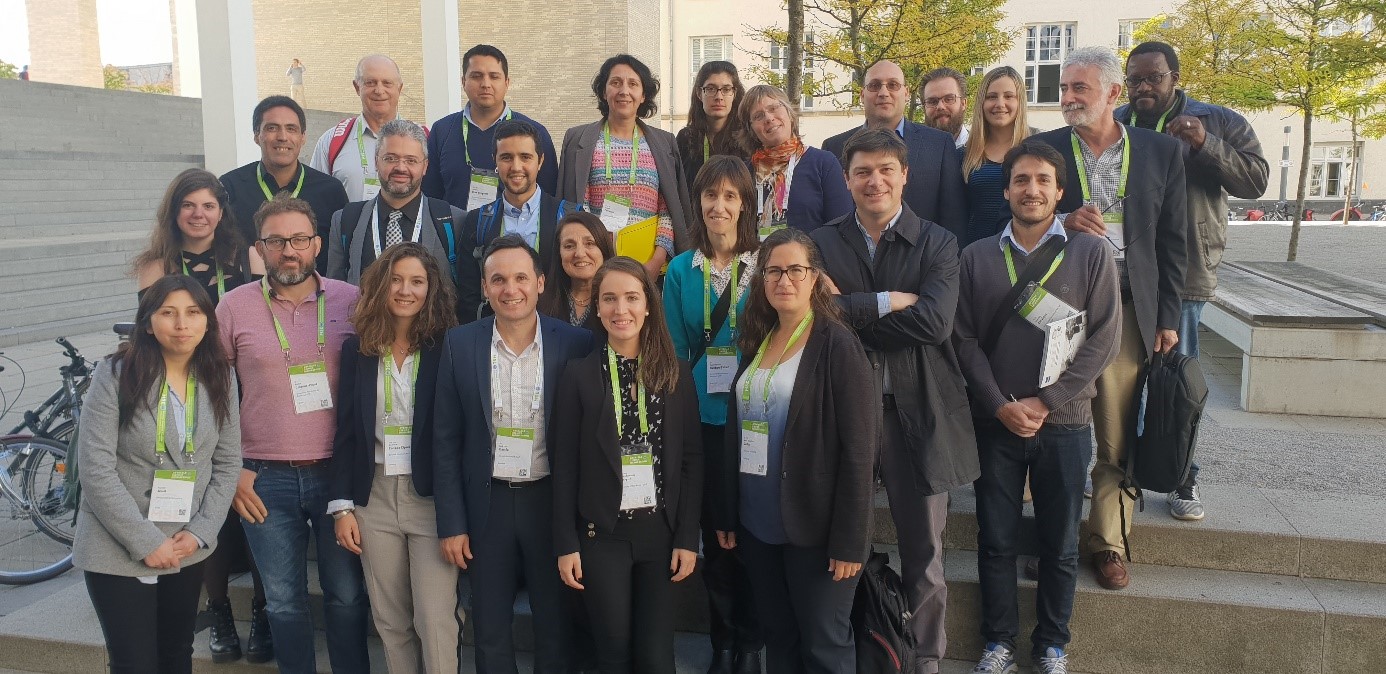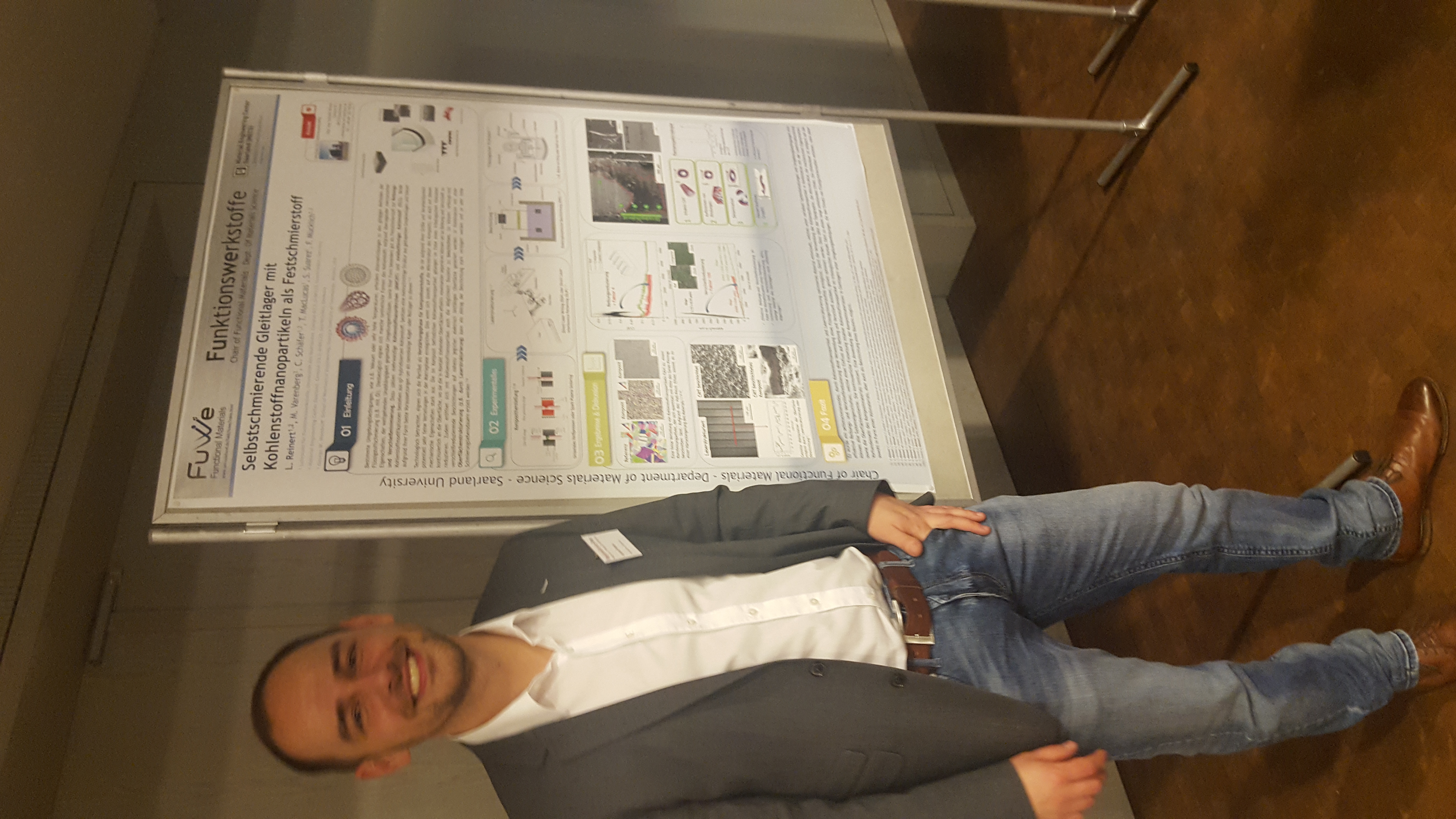Summary
CREATe-Network is composed of 3 academic institutions in Europe (Saarland University; Technical University of Catalonia; and INM - Leibniz Institute for New Materials), 3 non-academic institutions in Europe (AB Sandvik Coromant; Materials Engineering Center Saar; and Nanoforce Ltd.), as well as 8 academic partners outside Europe (CSIR - Council for Scientific and Industrial Research; Universidad Católica de Uruguay; INTEMA; Universidad de Concepción; Univ. Sao Paulo, Georgia Institute of Technology, Universidad Católica de Chile and Universidad Tecnológica Nacional Argentina).
The network cooperates in the field of design, processing and characterization of novel composite materials for resource-efficient applications and environmentally friendly technologies, in particular energy storage, bearings, electrical contacts, and cutting tools.
The purpose of the network is to combine the expertise of the academic and industrial network members in order to design new composite materials with superior properties and performance. The cooperation is based on the exchange of researchers from academy and industry, complemented with network workshops and conferences.
Work performed from the beginning of the project to the end of the period covered by the report and main results achieved so far
Top 1: First, metal nitrides were studied for electrochemical energy storage technologies. However, its electrochemical stability was insufficient. Therefore, we moved on to carbon nanoparticle/metal oxide systems. Using hydrothermal synthesis, we showed a 10-fold increase in energy storage capacity when using manganese oxide/carbon hybrids. Using atomic layer deposition, we achieved battery-like energy storage capacities when using titania/vanadia metal oxides. Using nanoscale engineered carbon fiber/carbon nanoparticle electrodes, we enhanced the energy storage capacity by a factor of 5-6. This was possible by capitalizing on the high electrical conductivity of the carbon fibers and the large surface area provided by carbon nanoparticles. A key factor to enable the high performance was the use of redox-active surface groups at the fluid/solid interface.
Top 2 and 3: production of composites reinforced with carbon materials. The best distribution of carbon nano particles (CNP) within the metallic matrix was achieved for the nanodiamond (ND)-containing composites, followed by onion like carbon (OLC) and by carbon nanotube (CNT). This feature is related primarily to the hybridization of the C atoms in the nanoparticles and in the case of OLCs and CNTs (both sp2) the difference is related to their shape, since CNTs tends to enhance their interlinking, resulting in larger agglomerates. A new developed processing route which takes advantage of the optimal dispersability of sp3 carbon (nanodiamonds), allows to control the sp3/sp2 ratio by a thermal treatment, and thus to tailor the global physical properties. Very high densification was achieved by hot pressing and by spark plasma sintering, without compromising the structure of the CNTs.
Top 2: with tribological tests and modeling of contact mechanics, we were able to identify the self-lubricating mechanisms brought by the CNPs and its influence on friction and wear. The embedded nanoparticles produce a continuous feeding of solid lubricant which reduces the overall coefficient of friction. This effect has been even enhanced by combining composites with a surface structuring and a coating with CNPs.
Top 3: test facilities were developed for studying contact resistance of composites. The thermal diffusivity and electrical conductivity of the composite could be slightly increased against the pure metal, having the reduction of contact resistance a much more significant effect, opening good perspectives for this material to be used as electrical contact. Low voltage sparking experiments showed that the composites have a reduced arc duration and energy input, which translates into a larger duty-life.
Top 4: cemented carbides with different binders were produced by hot pressing consolidation and liquid phase sintering, presenting a functionally graded microstructure regarding chemical composition, particle size of WC and hardness profiles. We developed a method to analyze in-situ the thermal stress behavior during an individual thermal cycle. Despite of the functionalization of the surface, the alternating stress behavior cannot be avoided indicating that the overall composition of the cemented carbide strongly affects the stress behavior of the system. The addition of Cr and (Ta,Nb)C to the WC-Co substrate enhances the corrosion resistance of the binder, reducing fatigue induced cracks. Differences between the coatings (ZrCN and TiCN) in thermomechanical experiments could be explained with the help of Finite Elements Simulations and is based on the different mechanical behavior. Finally, prototypes of different carbide variants and coatings could be tested in plane milling of motor blocks made of cast iron, showing that Zr(CN) coatings improved the resistance to crack formation and propagation.
Progress beyond the state of the art, expected results until the end of the project and potential impacts
The novel solutions proposed in the fields of energy storage, low friction materials, electrical contacts and cutting tools have shown very promising results in performance under operating conditions, highlighting the fact that they could indeed replace current typical materials. The solutions are based in green, low-environmental impact materials (i.e. carbon-based), which further supports the initial goal of developing resource-efficient alternatives.
Following conclusions can be drawn:
• Energy storage: New carbon based materials show enhanced specific energy and power when compared to current materials. The developed synthesis route is straightforward and optimizes the utilization of resources.
• Low-friction self-lubricating materials: Increased duty life by the efficient reduction of wear and improved energy efficiency by a significant reduction in friction. These advanced composite materials with reduced friction and wear may help saving energy costs.
• Electrical contacts in automotive branch: increased reliability through efficient circuit breaking and extended duty life. Metal matrix composites reinforced with carbon materials improve the performance of electrical contacts, allowing for a reduction of weight in the contact system. This is especially important in transportation, since a reduction in weight and energy loses implies a reduction of fuel consumption. Finally, with the proposed solution, it is possible to reduce the use of expensive noble metals like Ag or rare elements like In.
• Cutting tools: An extension of the applicability range to hard-to-machine metals was achieved. Furthermore, the extension of the duty life of machining tools can reduce, on one side the energy consumed in machining pieces and, on the other side the consumption of strategic important materials like for instance tungsten.
The scientific impact of the project is evident in the large amount of publications in important journals (37). Finally, highly-qualified human resources could be developed. Through extensive knowledge exchange, participating early stage researchers were able to not only gain insights into relevant scientific topics, but also to be in permanent contact with leaders of the industry. Through the enhancement of existing scientific cooperation and the cultivation of new ones, the participants of the network were able to found new common interests and start new cooperative research lines.
Recent developments and achievements
In Topic 1 metal nitrides were studied for electrochemical energy storage technologies. However, its electrochemical stability was insufficient for actual
applications. Therefore, we moved on to carbon nanoparticle/metal oxide systems. Using hydrothermal synthesis, we showed a 10-fold increase in energy storage
capacity when using manganese oxide/carbon hybrids. Using atomic layer deposition, we achieved battery-like energy storage capacities when using titania/vanadia
metal oxides. Using nanoscale engineered carbon fiber/carbon nanoparticle electrodes, we enhanced the energy storage capacity by a factor of 5-6. This was possible
by capitalizing on the high electrical conductivity of the carbon fibers and the large surface area provided by carbon nanoparticles. A key factor to enable the high
performance was the use of redox-active surface groups at the fluid/solid interface. The use of aqueous electrolyte makes this technology particularly cost
attractive.
The topic 2 and 3 are related to the production of composites reinforced with carbon materials. We were able to correlate the different ultrasound exposure
times of the nanoparticles (NP) to the final agglomerate size in the composites. The best distribution within the metallic matrix was achieved for the nanodiamond
(ND)-containing composites, followed by onion like carbon (OLC) and by carbon nanotube (CNT). This feature is related primarily to the hybridization of the C atoms
in the nanoparticles (sp3 is chemically more inert than sp2, thus reducing the agglomeration). Within the sp2 hybridized particles (OLCs and CNTs), the difference
is related to their shape. The shape of CNTs tends to enhance their interlinking, resulting in larger agglomerates. Very high densification was achieved by
conventional hot pressing and spark plasma sintering, without compromising the structure of the CNTs, retaining their intrinsic properties. Taking in account the
grain size of the nickel matrix composites, a Zener-based model could be successfully adapted to predict the grain refinement for all the carbon nanoparticles. It
was shown, that this model is perfectly valid, as long as no saturation value of the refinement effect is reached (furhtermore saturation level depends on the size
of agglomerates). Concerning the tribological behavior, we were able to identify the self-lubricating mechanisms brought by the Carbon Nano Particles (CNP). This
mechanism is straightforwardly transferred to the case of composite materials, where a continuous feeding of solid lubricant (in this case, the CNP) reduces the
overall coefficient of friction.
In Topic 4 functionally graded cemented carbides with different binders were produced by hot pressing consolidation and by liquid phase sintering. The main
objective was to produce bi-layers consisting of different cemented carbide compositions, sintered in sequential steps. The consolidated samples present a
functionally graded microstructure regarding chemical composition, particle size of WC and hardness profiles. The study of residual stresses conditions has been
successfully completed. We developed a method to analyze in-situ the thermal stress behavior of Ti(C,N) deposited on graded cemented carbides during an individual
thermal cycle. We came to the conclusion that, despite of the functionalization of the surface, the alternating stress behavior cannot be avoided indicating that
the overall composition of the cemented carbide strongly affects the stress behavior of the coating/substrate systems. A methodology for the 3D-characterization of
wear features by serial sectioning techniques was successfully developed and applied to a 3D visualization strategy of comb cracks in milling inserts. The study of
their oxidation and corrosion behavior showed that the addition of Cr and (Ta,Nb)C to the WC-Co composition enhances the corrosion resistance of the binder, which may
reduce the formation of fatigue induced cracks in the presence of cooling media.
Thermodynamic modeling showed that tailored hardness/toughness can be produced by adjusting the WC particle size and binder content on both sides of the bi-layer
composite.
All the aforementioned acquired knowledge has been presented in international conferences and 25 peer-reviewed papers in renowned scientific journals. A project
kick-off meeting was organized in March 2015 at the Unviersidad Catolica del Uruguay. In February 2016, the same University organized with the support of EUSMAT a
workshop on Processing and Characterization of Advanced Steel and Alloys. About 25 international researchers (most of them participants in the EU projects SUMA2 and
CREATe), met to discuss about new research results in this topic. On Spetember 2016, a project meeting was carried out in Barcelona, where the progress of the project
was discussed.
Deliverables







For further information, please visit:
https://cordis.europa.eu/project/rcn/194130_en.html





























.jpg)
.jpg)
.jpg)
.jpg)
.jpg)
.jpg)
.jpg)




